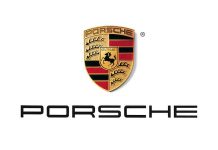Honda beats the export trend
Japanese car maker Honda Automobile (Thailand) recently reported a substantial 27 percent jump in the value of its exports in the first half of this year, to 40.8 billion baht. Given the general malaise within the overall export industry in Thailand, this represents especially good news and indicates that quality products will always find a niche even in tough economic times.
Honda Thailand attributes the growth to increasing demand for the City model in the Asia-Pacific region and the recent launch of its HR-V sport crossover vehicle.
Exports of completely built-up Honda vehicles from Thailand increased by a whopping 78 percent year-on-year to 19 billion baht, largely on the back of demand for models in the Middle East, the Philippines and Australia.
The top three export models, accounting for 70 percent of the total, were the City, HR-V and Jazz. In Australia, the top models are the Jazz, CR-V and HR-V; in the Philippines the Jazz and Mobilio are the key models while in the Middle East it is the City which dominates the Honda range.
Exports of completely knocked-down vehicles only rose by three percent in value to 19.7 billion baht on demand from Honda factories based in Indonesia, Malaysia and South America for assembly of their domestic models.
From its Thai base, Honda also exports supporting products such as spare parts and accessories as well as moulds for automobile production lines.
Exports of spare parts and accessories increased by 25 percent in value to 1.6 billion baht. This was chiefly on the back of increased demand in Indonesia, Cambodia, Vietnam and India.
Honda first began making product for export back in 1997 and has always set a high standard for its materials. The Thailand operation is Honda’s largest in the Asia-Pacific region, outside of Japan itself. At present Honda employs around 6,000 staff and the factory has the capacity to produce 300,000 vehicles annually.
The only real negative for Honda at present is in the local market where, along with all other major manufacturers, it is struggling to reach its eco-car target of 100,000 vehicles per year.
Nissan was the first company due to produce 100,000 eco-cars annually, while Honda is due to fulfill this requirement in 2015. Sluggish local sales have meant the eco-car market is far from vibrant, although Honda’s current share of the eco-car market stands at just 3.5 percent at present.









